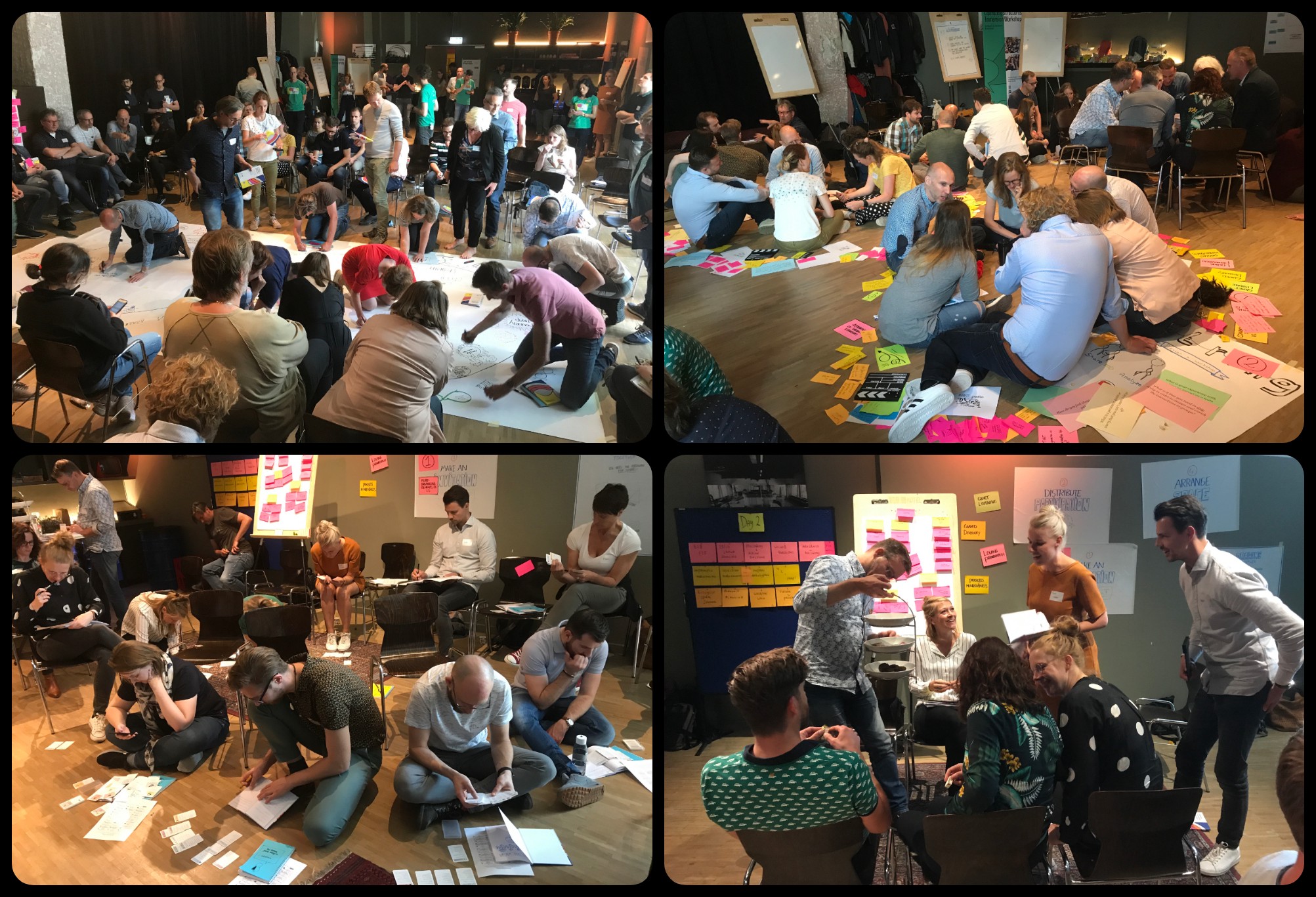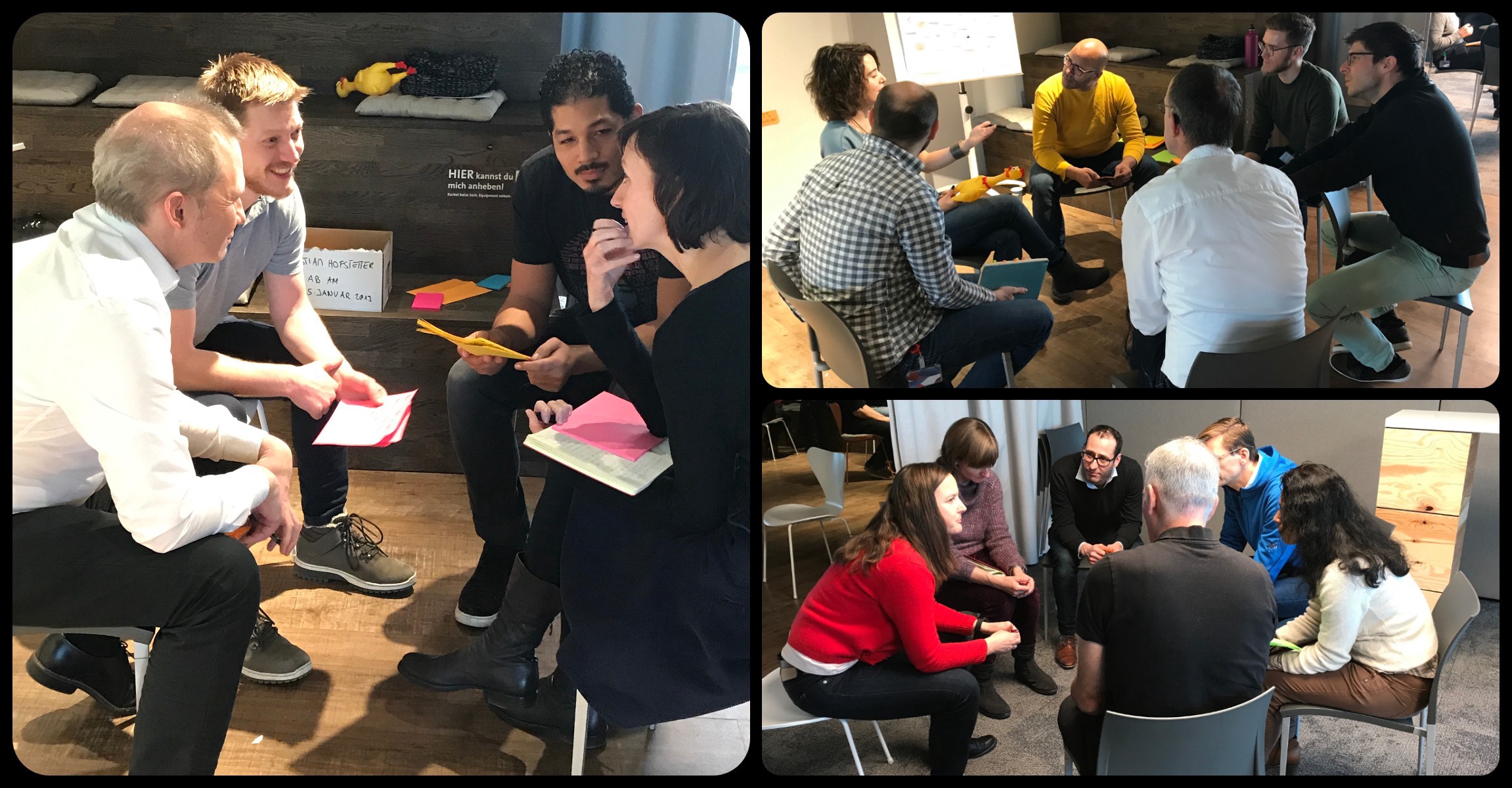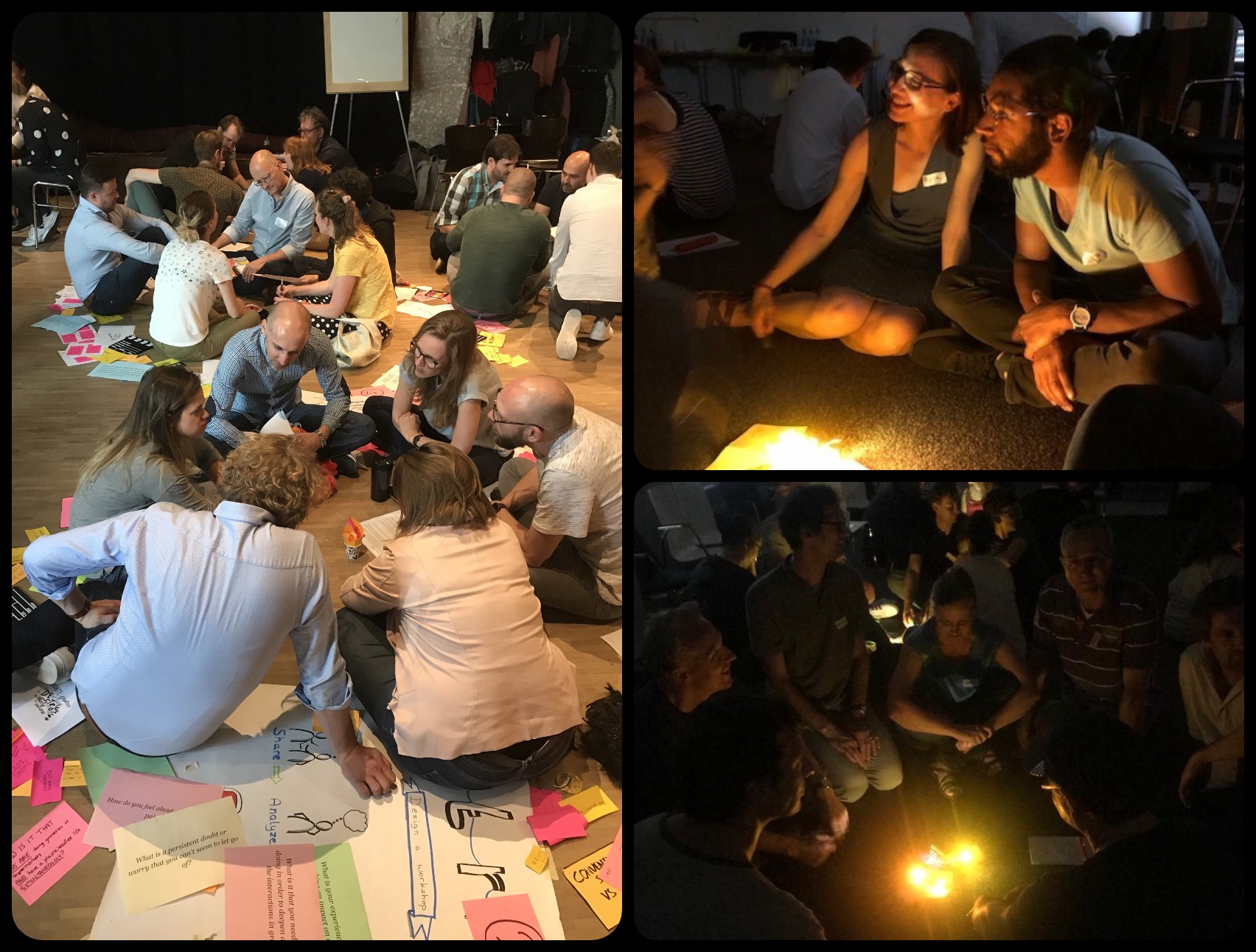Liberating Structures are a collection of interaction patterns that allow you to unleash and involve everyone in a group — from extroverted to introverted and from leaders to followers. In this series of posts, we show how Liberating Structures can be used with Scrum.
All of us continuously encounter Wicked Questions. We experience them on a yearly, monthly, and even daily basis. But are you aware of this?
You might recognize the situation where your organization tries to achieve goals that seem important and valuable, but somehow cause tension, frustration or lead to heated arguments. Or in your private life, you’ve got all these great ideas, but somehow achieving seemingly complementary goals just doesn’t work out.
There are Wicked Questions at work here, once you know what they are, you start seeing them everywhere! For example, we notice them in our work with clients that use Scrum Teams for product development. A question they often struggle with is:
“How can we encourage autonomous Scrum Teams while also keep moving in the same direction, simultaneously?”
When working with organizations that want to become more innovative, a question that emerges is:
“How can we give our people room to innovate while also keeping focus on getting work done?”
When organizations launch initiatives to implement Scrum, XP, or Kanban, Wicked Questions inevitably emerge. Making these questions transparent is crucial as it triggers the necessary conversations to create positive change. However, ignoring these questions can result in unresolved conflict and therefore have a disastrous effect.
This blog post dives deeper into clarifying the purpose of Wicked Questions and how to facilitate it. We’ll offer examples of how we’ve used it, and how to combine Wicked Questions with other Liberating Structures.

During the Liberating Structures Immersion Workshop in May 2019 in Amsterdam, we used Wicked Questions as input for Integrated~Autonomy
The Purpose of Wicked Questions
The Liberating Structure Wicked Questions was created by Henri Lipmanowicz and Keith McCandless, inspired by earlier work by Brenda Zimmerman (see Edgeware) and Scott Kelso (see The Complementary Nature).
Its purpose is not to find a single answer to a Wicked Question, but to create transparency about seemingly paradoxical realities that exist side-by-side. By accepting both realities, we can engage in deeper strategic thinking and explore new possibilities.
“The purpose of Wicked Questions is not to find a single answer, but to create transparency about seemingly paradoxical realities that exist side-by-side.”
How to facilitate Wicked Questions?
- (2 min) Explain the overall purpose of Wicked Questions: articulating the paradoxical challenges that a group must confront in order to succeed.
- (5 min) First alone, then in small groups, make a list of everything you know is true about the topic you’ve chosen.
- (5 min) Introduce the concept of Wicked Questions and give some examples;
- (5 min) First alone, then in small groups, generate pairs of opposites or pairs where there exists at least (creative) tension between the sides and both sides are positive, worthy goals;
- (10 min) First alone, then in small groups, create potential Wicked Questions out of the pairs by using the template: “How is that we are [Side 1] and [Side 2], simultaneously?”. The best Wicked Questions have positive, worthy goals on both sides;
- (3 min) Each group selects the Wicked Question that is the most impactful and the most relevant to them as a group;
Examples of how we’ve used it
As one of our favorite Liberating Structures, we’ve used Wicked Questions on numerous occasions. For example during the introduction of Scrum within an organization, Sprint Retrospectives, Sprint Reviews, gatherings of Scrum Masters and meetups of the Liberating Structures user groups:
- At the kickoff of a Scrum implementation. The question the organization was facing is “How can we use Scrum to deliver our first increment on the short term while building a robust product for the long term?”. Together with the stakeholders, the Scrum Teams explored this question and jointly determined a strategy and next steps.
- At the previous Liberating Structures European Learning Gathering in Hamburg, impactful stories were shared during Conversation Cafe, by using the Wicked Question “How do you maintain the open, non-commercial & community-driven nature of LS while also allowing people to demonstrate their proficiency with it?”.
- During a Scrum Master meetup with Swisscom and KPN iTV the group chooses the following question being the most wicked: “How is it that we build leadership teams within our Agile transformation and simultaneously expect self-organization and responsibility?”. Afterward, they shared experiences that helped them become successful while dealing with these paradoxical challenges.
- Wicked Questions helped us define strategies for The Liberators. An example of a question we face is “How can we scale our engagement with the community to a global level while remaining a small company of two simultaneously?”. It resulted in automating recurring activities without losing our personal connection with our followers.
- We’ve used Wicked Questions in our private life by asking “How is it that we are dedicated to our work and being fully present for our families simultaneously?”. It resulted in sometimes difficult but necessary conversations about how to find a work/life balance.

Wicked Questions combined with Conversation Cafe in a workshop with Swisscom and KPN iTV.
Combinations with other Liberating Structures
- Use Wicked Questions as input for Critical Uncertainties to identify and explore the most critical and uncertain “realities”. The two sides of the Wicked Question become the X and Y axes. By creating a grid with these two axes, four potential scenarios will emerge. For each of these scenarios strategies, experiments, and practices can be defined that will help the group become successful.
- Combine Wicked Questions with Conversation Cafe. Define multiple Wicked Questions in smaller groups. Each group selects the question they want to use for Conversation Cafe. This will help make sense about the paradoxical challenges you’re facing and offers the opportunity to share experiences.
- Wicked Questions are not something you can ‘solve’. Both sides represent an undeniable reality. Still, our thinking often makes us look for either/or solutions — solutions that affect only one side of the Wicked Question. Integrated~Autonomy helps explore solutions that address both sides.

Wicked Questions combined with Discovery and Action Dialogue and Integrated Autonomy. A string we used during the Immersion Workshop in May 2019 in Amsterdam. The visualization is created by Thea Schukken.
- Use the most Wicked Question the group created as input for UX Fishbowl. during the fishbowl, the inner group shares concrete examples, ideas, and stories about how they’ve experienced the Wicked Question. The outer circle listens with full attention formulates new questions for the next round.
- Trigger destructive thinking with TRIZ by asking the group to generate ideas on how to ensure the Wicked Question will result in the most horrible scenario. What can you do to guarantee both sides of the Wicked Question will become the organizations biggest nightmare? In the next round, you discuss the things everyone already recognizes and concrete steps are defined to stop counterproductive behavior.
- Use What, So What, Now What to explore the Wicked Question in a structured way and have everyone decide on the next steps together. Taking the Wicked Question into account “What do we notice?”, “So, what does this mean?” and “Now, where do go from here?”.
- Try Wicked Questions as input for Future~Present. Invite groups to travel to a successful future and have them tell the story of what that required in the present, while also appreciating what will grow into the success of tomorrow. What is it, that they’ve done to strike a perfect balance between both sides of the Wicked Question?
- If a question is really wicked, the perfect solution will be difficult to find. This can cause groups to get stuck in their thinking. This is where 15% Solutions help. It triggers big change, by starting small.

Sharing stories while sitting around a ‘real’ campfire during Future~Present. Consider creating a string by using Wicked Questions as input.
Tips & ideas
- Explain that both sides of the Wicked Question should be expressed in an appreciative form;
- Write down the structure of the Wicked Question on a flip chart and have it visible during the exercise: “How is it that we are… and we are… simultaneously?”
- Offer examples of Wicked Questions; this helps the group understand the concept more quickly;
- Set expectations. It’s ok when not everyone creates the perfect Wicked Question. Having one good question as a group is already a great achievement.
- Start the different rounds with one minute of individual thinking. This gives everyone the opportunity to get their own thinking started.
- Encourage the group to help each other in creating Wicked Questions. In small groups, give support in making it more specific, tangible and wicked.
Closing
Now that you know what Wicked Questions are about, for sure you’ll start seeing them everywhere as well! Feel free to share them in the comments, it would be great to learn from the paradoxical challenges we’re all facing and the strategies that proved to be helpful.
Interested in learning many different Liberating Structures in an intense 2-day workshop? Check out our agenda for upcoming Immersion Workshops. If you’re aiming to join, book early — they are exceptionally popular. And join the Dutch User Group to learn more about Liberating Structures.

See how you can support us at patreon.com/liberators

